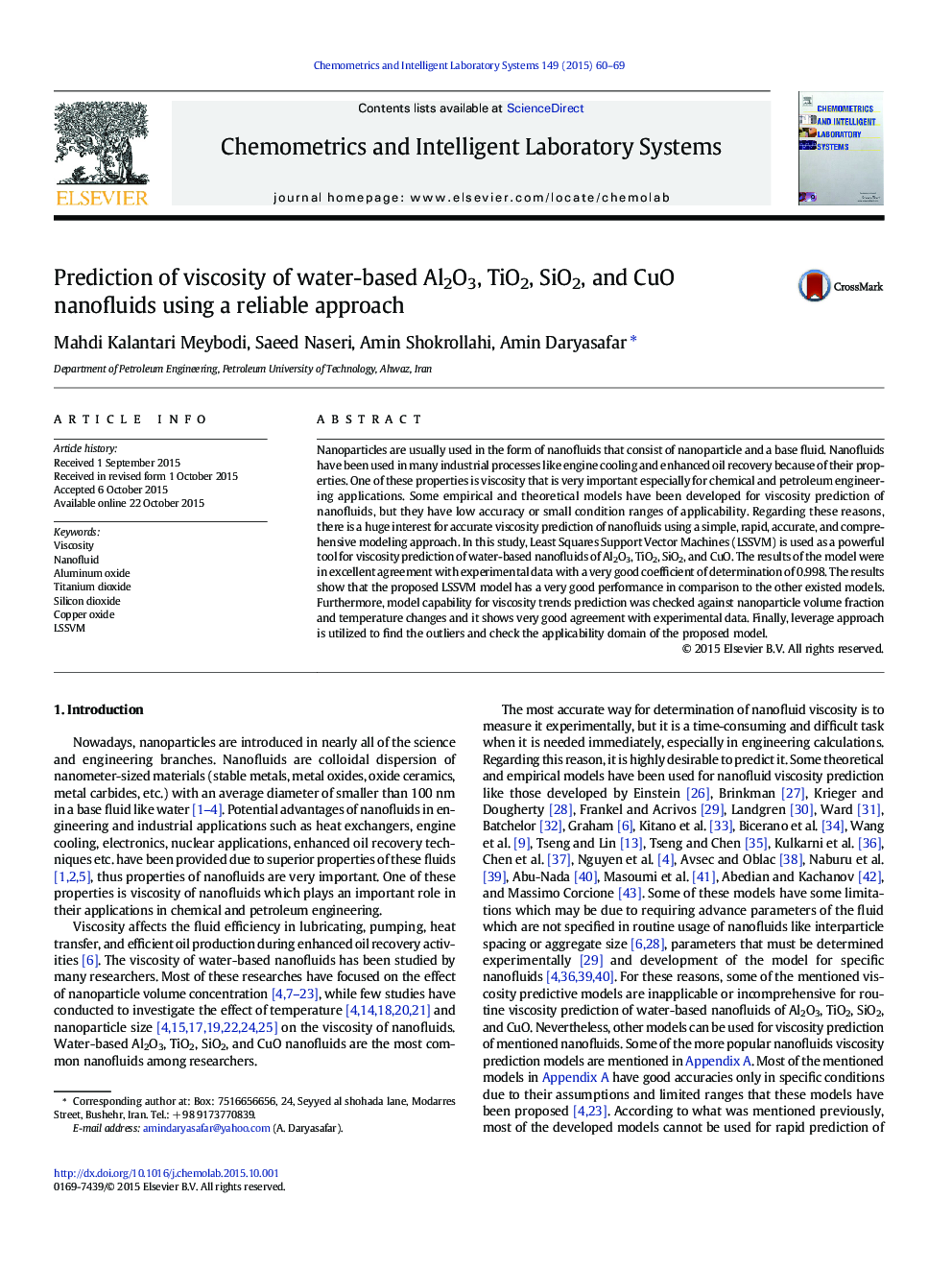| Article ID | Journal | Published Year | Pages | File Type |
|---|---|---|---|---|
| 1179205 | Chemometrics and Intelligent Laboratory Systems | 2015 | 10 Pages |
•Least Squares Support Vector Machines (LSSVM) is used as a powerful tool for viscosity prediction of water-based nanofluids of Al2O3, TiO2, SiO2, and CuO.•The results of the model were in excellent agreement with experimental data with a very good coefficient of determination of 0.998.•The proposed model shows better performance in predicting nanofluids viscosity compared to the well-established empirical formulas.•Leverage approach is utilized to find the outliers and check the applicability domain of the proposed model.
Nanoparticles are usually used in the form of nanofluids that consist of nanoparticle and a base fluid. Nanofluids have been used in many industrial processes like engine cooling and enhanced oil recovery because of their properties. One of these properties is viscosity that is very important especially for chemical and petroleum engineering applications. Some empirical and theoretical models have been developed for viscosity prediction of nanofluids, but they have low accuracy or small condition ranges of applicability. Regarding these reasons, there is a huge interest for accurate viscosity prediction of nanofluids using a simple, rapid, accurate, and comprehensive modeling approach. In this study, Least Squares Support Vector Machines (LSSVM) is used as a powerful tool for viscosity prediction of water-based nanofluids of Al2O3, TiO2, SiO2, and CuO. The results of the model were in excellent agreement with experimental data with a very good coefficient of determination of 0.998. The results show that the proposed LSSVM model has a very good performance in comparison to the other existed models. Furthermore, model capability for viscosity trends prediction was checked against nanoparticle volume fraction and temperature changes and it shows very good agreement with experimental data. Finally, leverage approach is utilized to find the outliers and check the applicability domain of the proposed model.
